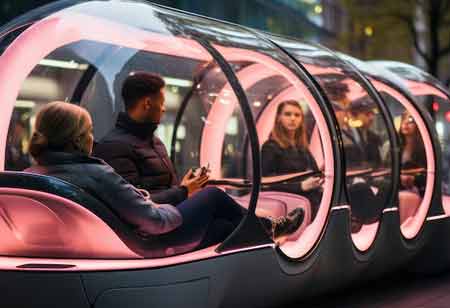Fremont, CA: Technological innovations are transforming public transportation, enhancing its green, innovative, and efficient aspects. These include electric vehicles, autonomous systems, data-driven solutions, and shared mobility, addressing urban mobility challenges like congestion, pollution, and accessibility.
Electric vehicles are rapidly becoming a game-changer in public transportation. With increasing considerations about air pollution and the environmental impact of fossil fuels, electric buses, trains, and trams are replacing their gas-powered counterparts in many cities worldwide. Autonomous vehicles are also making their way into public transportation. Self-driving buses, shuttles, and even taxis are beginning to operate in some urban regions, offering an efficient and cost-effective way to move passengers. Autonomous vehicles can reduce human error, increase safety, and optimize routes for better efficiency.
Mobility as a service (MaaS) is a developing concept that allows passengers to plan, book, and pay for their transportation using a single, integrated platform. MaaS incorporates diverse modes of transport, such as buses, trains, taxis, bicycles, and shared mobility services like ride-hailing, into one seamless service. This innovation is powered by mobile apps and platforms that provide real-time data, route optimization, and payment systems, allowing users to choose the most convenient and cost-effective travel options.
With the rise of smart ticketing and contactless payment systems, public transport is becoming more user-friendly and efficient. Modern payment solutions like RFID cards, mobile wallets, and contactless bank cards allow passengers to board buses, trains, or trams without needing cash or paper tickets.
The growing favor of shared mobility services, such as ride-hailing and bike/scooter-sharing, significantly alters the public transport landscape. These services provide last-mile connectivity, which addresses the gap between fixed-route public transit stations and passengers’ final destinations. Electric bikes and scooters are gaining traction in urban areas, offering an eco-friendly alternative for short-distance travel.
AI and ML are creating significant strides in public transportation. AI algorithms are used for traffic management, route optimization, and demand forecasting. AI systems can predict traffic patterns, identify bottlenecks, and suggest optimal routes for buses and trains, minimizing delays and reducing energy consumption.
Machine learning models also help transit operators improve customer service by analyzing feedback and identifying areas for improvement. AI-powered chatbots and virtual assistants provide passengers with real-time information, answer queries, and help with navigation.

